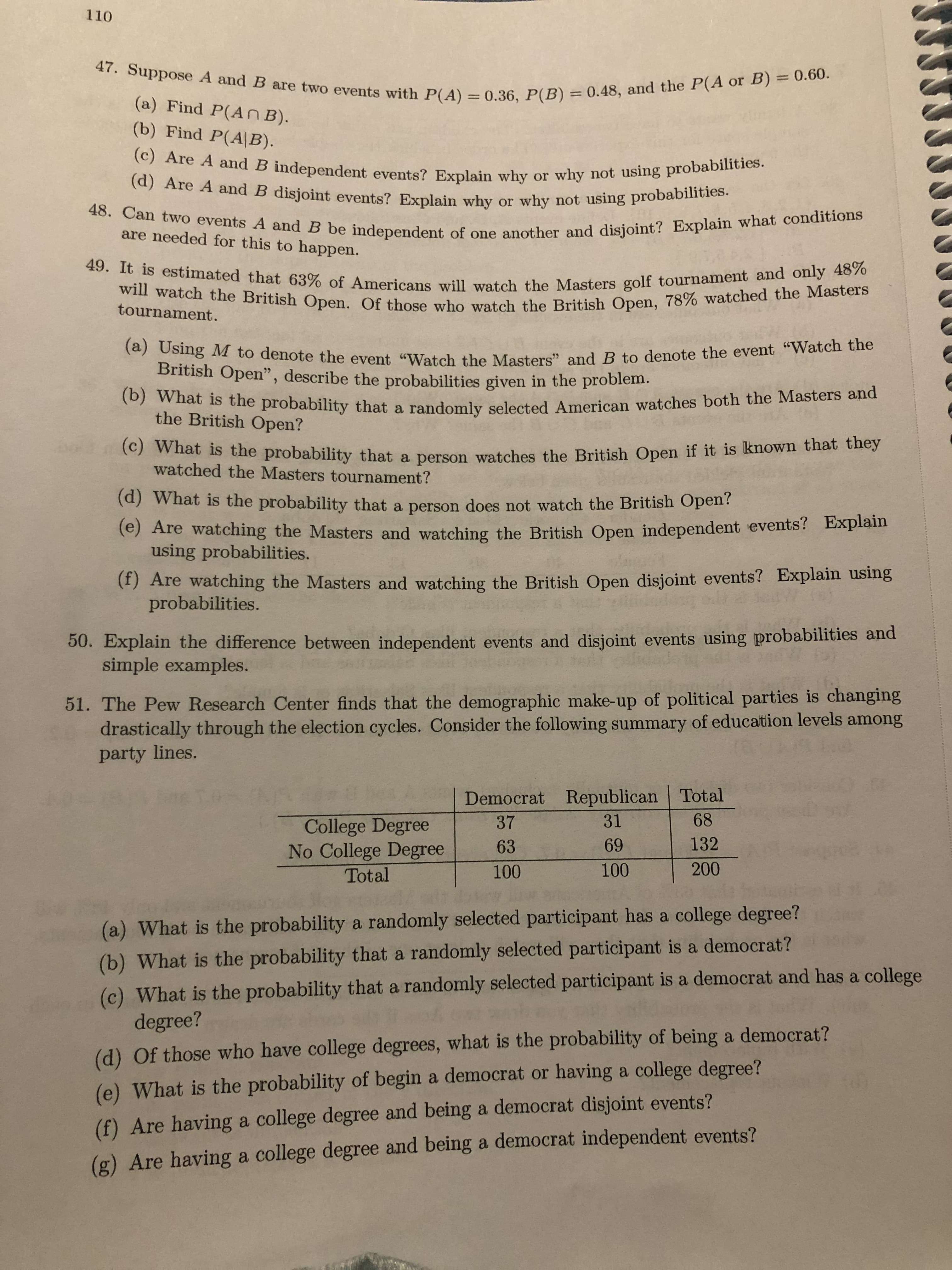110 47. Suppose A and B are two events with P(A) = 0.36, P(B) = 0.48, and the P(A or B) = 0.60. %3D %3D (a) Find P(An B). (b) Find P(A|B). (c) Are A and B independent events? Explain why or why not using probabilities. (d) Are A and B disjoint events? Explain why or why not using probabilities. 48. Can two events A and B be independent of one another and disjoint? Explain what conditions are needed for this to happen. 49. It is estimated that 63% of Americans will watch the Masters golf tournament and only 48% will watch the British Open. Of those who watch the British Open, 78% watched the Masters (a) Using M to denote the event "Watch the Masters" and B to denote the event "Watch the British Open", describe the probabilities given in the problem. (b) What is the probability that a randomly selected American watches both the Masters and the British Open? (c) What is the probability that a person watches the British Open if it is known that they watched the Masters tournament? (d) What is the probability that a person does not watch the British Open? (e) Are watching the Masters and watching the British Open independent events? Explain using probabilities. (f) Are watching the Masters and watching the British Open disjoint events? Explain using probabilities. 50. Explain the difference between independent events and disjoint events using probabilities and simple examples. 51. The Pew Research Center finds that the demographic make-up of political parties is changing drastically through the election cycles. Consider the following summary of education levels among party lines. Democrat Republican Total 68 31 College Degree No College Degree Total 37 132 69 63 200 100 100 (a) What is the probability a randomly selected participant has a college degree? (b) What is the probability that a randomly selected participant is a democrat? (c) What is the probability that a randomly selected participant is a democrat and has a college degree? (d) Of those who have college degrees, what is the probability of being a democrat? (e) What is the probability of begin a democrat or having a college degree? (f) Are having a college degree and being a democrat disjoint events? (g) Are having a college degree and being a democrat independent events?
Percentage
A percentage is a number indicated as a fraction of 100. It is a dimensionless number often expressed using the symbol %.
Algebraic Expressions
In mathematics, an algebraic expression consists of constant(s), variable(s), and mathematical operators. It is made up of terms.
Numbers
Numbers are some measures used for counting. They can be compared one with another to know its position in the number line and determine which one is greater or lesser than the other.
Subtraction
Before we begin to understand the subtraction of algebraic expressions, we need to list out a few things that form the basis of algebra.
Addition
Before we begin to understand the addition of algebraic expressions, we need to list out a few things that form the basis of algebra.
Number 49 parts C and D

Trending now
This is a popular solution!
Step by step
Solved in 2 steps with 2 images




